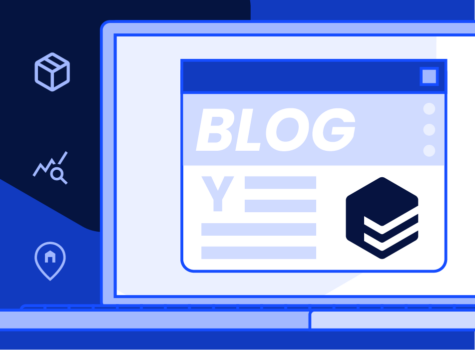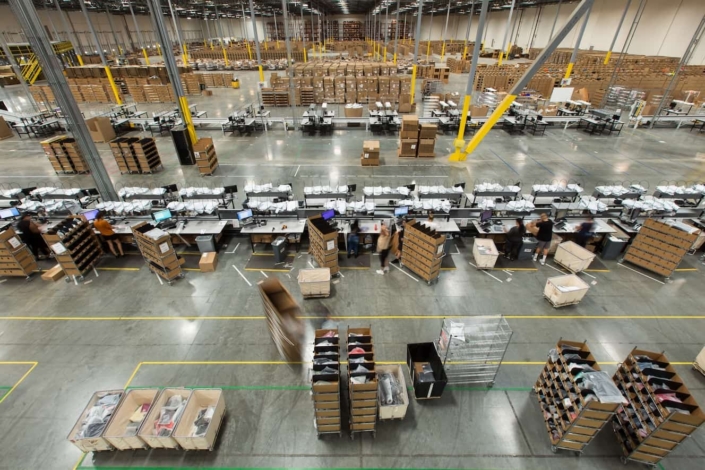The term logistics is deceptively simple. With that one short word, we refer to countless workflows, departments, partners, and resources.
In many organizations, the aforementioned processes and stakeholders all work separately to complete specific functions. This method works, but it’s not always the most effective way to operate.
That’s where integrated logistics comes in. This business model brings all supply chain and management functions into harmony, aligning the entire organization around a common goal: to produce, sell, and ship products as quickly and efficiently as possible.
What is integrated logistics?
An integrated logistics approach is a supply chain model that connects an organization’s departments, technology, and resources. This holistic approach coordinates every activity involved in the movement and storage of goods, including transportation, warehousing, order processing, and more.
With various supply chain processes operating as a single cohesive unit, the business becomes more efficient. For example, an online retailer might integrate inventory, order management, and shipping systems to streamline deliveries and reduce costs.
How does integrated logistics work?
Integrated logistics works best when stakeholders across the supply chain collaborate, coordinate, and freely share information. Stakeholders include both internal team members and external partners.
Human communication isn’t the only prerequisite for an integrated logistics strategy to be successful; every supply chain process in an organization must be connected via technology. An integrated logistics model leverages technologies like ERP, WMS, OMS, TMS, inventory management systems, shipping software, and more to eliminate redundancies and optimize processes.
With real-time data analytics at their fingertips, businesses can easily identify opportunities for optimization and quickly respond to disruptions. This ultimately leads to cost savings, supply chain visibility and efficiency, scalability, and even improved customer service.
What are the 4 types of logistics?
The four types of logistics—inbound, outbound, reverse, and third-party logistics—each manage different stages of the supply chain, from receiving materials to delivering products or handling returns. Each type plays a crucial role in ensuring smooth operations across industries.
- Inbound logistics focuses on the receipt, storage, and transportation of raw materials from suppliers to manufacturing plants.
- Outbound logistics manages the movement of finished products from the manufacturer to customers or retail locations.
- Reverse logistics deals with returns, recycling, and the management of goods moving back through the supply chain.
- Third-party logistics (3PL) involves outsourcing logistics functions to a third-party provider, offering services like warehousing, transportation, and distribution.
Components of integrated logistics
As mentioned above, integrated logistics brings together every process involved in the creation, storage, and transportation of goods. From procurement to returns, each step in the supply chain must be in sync.
Procurement
In integrated logistics, procurement focuses on aligning supplier relationships with demand forecasts, optimizing costs, and streamlining the sourcing process.
Using digital procurement platforms, you can view real-time data and make more informed decisions. With optimized procurement strategies, your business will always be able to replenish inventory as needed.
Warehousing
As part of an integrated logistics approach, warehouses are strategically positioned to optimize distribution and reduce delivery times. To integrate warehousing with other logistics functions, use a warehouse management system (WMS) that provides real-time inventory data and helps improve order fulfillment accuracy.
Inventory management
Integrated logistics allows you to use real-time data to prevent stockouts or overstocks, improving overall efficiency and effectively meeting customer demand. Integration is achieved through advanced inventory management systems that link with other supply chain components, enabling accurate demand forecasting and timely replenishment.
Order processing
In integrated logistics, streamlined picking, packing, and shipping processes enhance speed and accuracy, resulting in improved customer satisfaction. Multiple systems are often required to fully integrate order processing.
An order management system (OMS) connects order processing with other supply chain functions, providing real-time updates on order status.
Shipping software like EasyPost Enterprise simplifies the shipping process, allowing you to automatically generate shipping labels, track packages, verify addresses, and view shipping data.
Reverse logistics
The ecommerce supply chain doesn’t end at a consumer’s doorstep. Integrating reverse logistics processes with other elements of the supply chain helps minimize costs and environmental impact. For full integration, goods should be able to flow easily both to and from end consumers.
Advantages of integrated logistics
Integrated logistics comes with many advantages, including lower costs, improved efficiency, greater supply chain visibility, and more.
- Lower costs. Integrated logistics consolidates various supply chain functions. This consolidation reduces redundant processes, minimizes excess inventory, and optimizes transportation routes, ultimately leading to cost savings.
- Improved efficiency and flexibility. When you have integrated logistics, both internal and external stakeholders can communicate and collaborate in real time. This connectivity makes it easier to adapt to unexpected disruptions.
- Better supply chain visibility. Integrated logistics systems provide a unified platform for tracking and monitoring each stage of the supply chain. With increased visibility, you’ll be able to identify areas for improvement and make data-driven decisions.
- Greater scalability. By aligning various logistics functions and technologies, organizations can easily expand their operations without facing significant disruptions.
- Enhanced customer service. Integration ensures a more responsive and customer-centric supply chain. If you provide accurate information on order status, shipment tracking, and inventory availability, you’ll deliver a superior customer experience.
How to get started with integrated logistics
As you assess your current processes, begin adopting new technology, and shape your organization’s cross-departmental communication strategy, you’ll have an integrated supply chain before you know it.
Assess your current supply chain
First, perform an in-depth analysis of your current logistics operations. Conduct a thorough assessment of each process, identifying strengths, weaknesses, and areas for improvement. Your goal during this stage is to gain a holistic understanding of the current state of your supply chain.
Dig deep into each of your internal and external supply chain elements, including systems, technology, infrastructure, partners, and other resources. In addition, take time to review your short- and long-term business goals. What needs to happen to achieve them? As you go on to build an integrated logistics system, make sure it’s aligned with your objectives.
Make an integration plan and adopt technology
Next, develop an integration plan that outlines how different supply chain processes will be interconnected and streamlined. Invest in advanced logistics technologies such as ERP, WMS, OMS, inventory management systems, and enterprise shipping software. Data should be integrated across each of these solutions, ensuring seamless coordination through each link of your supply chain, from procurement to reverse logistics.
Remember, your business will continue to grow. As you select technology, look for systems that are flexible and scalable so you can use them for many years to come.
Train departments on cross-functional collaboration
As you implement the technical aspect of your integrated logistics plan, remember not to neglect the cultural element. Your organization might benefit greatly from more interconnected logistics processes, but do your employees understand that? If not, they might not embrace the changes fully.
For integrated logistics to work well, you need to create a culture of collaboration and communication among different departments and individuals involved in the supply chain. PwC’s 2023 Digital Trends in Supply Chain Survey says it best: “Building a workforce that can adapt to different ways of working, particularly through technology, is critical for maintaining resilience in your supply chain.”
Start by facilitating cross-functional training programs to ensure that teams understand the interconnected nature of integrated logistics and how their roles contribute to the organization’s overall efficiency. In these trainings, encourage a mindset shift towards a unified approach to supply chain management.
Not sure where to start? Bring in the pros
Integrating your logistics is a big job. It requires the coordination of hundreds (or thousands) of moving parts: People, partners, departments, and systems. You might feel confident tackling the project alone—and that’s great!
If you’re less certain, consider outsourcing. Logistics consultants like Summit Advisory Team take the time to understand your internal supply chain processes, then offer advice and integrated logistics support to help you make the changes you’re aiming for.
Achieve integrated logistics with the EasyPost Enterprise suite of solutions
Is an integrated logistics model right for your organization? As you’ve learned, implementing integration within your supply chain can be a complex process. But it yields impressive results, including lower costs, better supply chain visibility, and greater efficiency.
To see these benefits, you’ll need to shape your integrated logistics approach around the right technology. Your WMS, OMS, ERP, shipping software, and other systems all need to be able to work together, transferring data back and forth.
To start your journey with integrated logistics, check out EasyPost Enterprise, a suite of shipping solutions designed for high-growth shippers. With both on-premise and cloud solutions, sub-second shipment processing, integrations with leading logistics platforms, and a robust analytics offering, EasyPost Enterprise makes it easy to integrate and streamline your parcel shipping.
Ready to embrace integrated logistics services?




